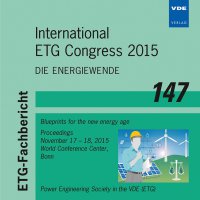Impact of Distributed Battery Energy Storage Systems on Low Voltage Grids with High Amount of Photovoltaics
Conference: International ETG Congress 2015 - Die Energiewende - Blueprints for the new energy age
11/17/2015 - 11/18/2015 at Bonn, Germany
Proceedings: International ETG Congress 2015
Pages: 8Language: englishTyp: PDF
Personal VDE Members are entitled to a 10% discount on this title
Authors:
Veerashekar, Kishan; Luther, Matthias (University of Erlangen-Nuremberg, Erlangen, Germany)
Seta, Piergiovanni La (Siemens AG, Erlangen, Germany)
Abstract:
In the last couple of years, on one hand the allowance for the feed-in power from photovoltaics (PV) has been drastically reduced and on the other hand the electricity price for the private end-customers has been steadily increased. Further, battery technologies have seen noteworthy progress. Currently and also in the future, the installation of virtually connected battery energy storage systems (BESS) in low voltage (LV) grids serves not only the end-customers but also the utilities. The main aim of this paper is to study the influence of BESS on an exemplary rural LV grid. This is achieved by performing load-flow analyses for the studied grid with and without PV and BESS, considering three scenarios which correspond to different points of time in summer and winter. On sunny summer days at noon, the simulation results show that the BESS reduce the high voltages along several feeder lines, reduce the loading of the majority of cables and distribution transformer, and reduce the losses to be covered by utilities. However, on a sunny winter working day at noon, it can be inferred that the BESS have a less significant influence on the investigated rural LV grid.


